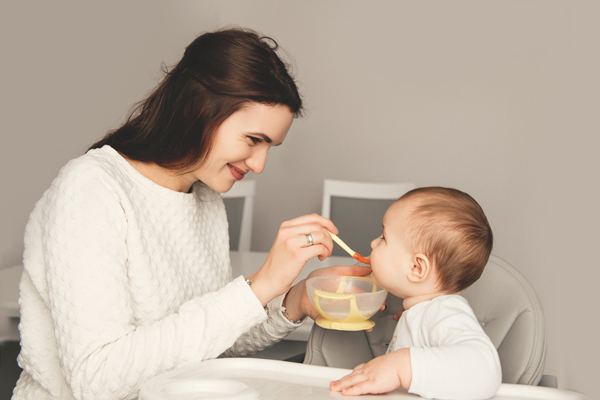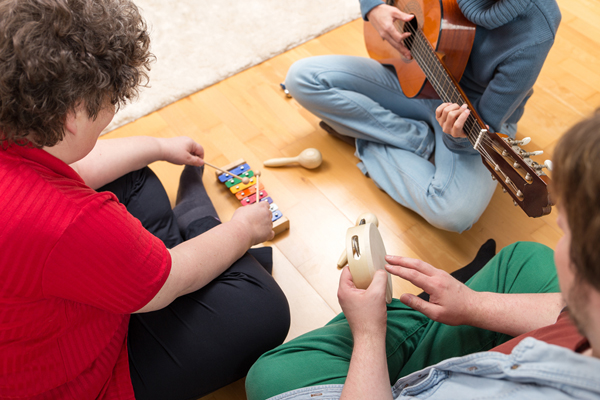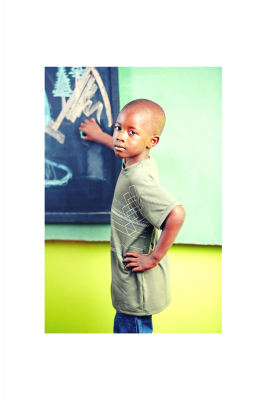Circle Speech - Small Talk
Susan DeMilia
Susan DeMilia is a highly regarded speech language pathologist with over 20 years of experience in a variety of settings. Since 2006, she has focused exclusively on working with children with communication challenges and their families.

You can do one of these things each day to promote communication and hearing health in the people you love.
- Smile and connect-facial expressions and eye contact help to open a conversation!
- Put away your electronic devices. Make a pledge to have phone –free meals.
- Use the volume control on your childrens’ headphones. Repeated exposure to high volume music will degrade hearing ability.
- Hang out with your kids- The important conversations happen unexpectedly. If you aren’t there, you will miss it.
- Get dirty-The more senses that are involved in play, the more that experience will stick with your child. Use their eyes and ears, get moving and let them get messy.
- Strictly limit screen time, especially for young children-babies learn by active engagement with the world. Watching a screen or electronic toy is passive and offers little benefit.
- Use comments, not questions-this holds true for toddlers and tweens alike. Comments and observations will elicit more conversation than quizzes and questions.
- Use feeling words- Label and address your feelings using language. Let your family see and hear you work through happy and frustrating times.
- Practice active listening-I’m sure you’ve heard this before but it bears repeating: “Listen to understand, not to respond.”
- Maintain healthy ears-Follow-up with your ENT if your child has frequent ear infections, trouble breathing through their nose or snores/wakes repeatedly at night for no known reason. Ear infections, throat infections and enlarged tonsils/adenoids can slow the development of speech and language skills.
- Contact a speech-language pathologist or audiologist in your area if you have questions or concerns about communication.

I’m noticing lately how distracted and scattered I can get when I am learning something new. I have a new project in my business, in addition to running a busy practice. Daily, I put things down and forget where I left them, I run errands and forget something important. I am impatient for the outcomes I want and can be emotional if I don’t get results quickly.
I am a relatively well-adjusted adult, and learning new skills while trying to juggle a busy schedule can make me nuts if I let it. It occurs to me that as parents and educators, we ask our children to learn and practice new skills under pressure every day. Learning and growing are obviously necessary for our kids to become happy, healthy adults. However, if we can be aware of the circumstances under which we ask children to learn, it can lead to more effective, natural learning. A little pre-planning goes a long way.
Try these three easy strategies...
- Break a task down into manageable steps. If a task seems easy to us, we might not realize just how complex the same task can seem to a new learner. Saying speech sounds correctly, for example, is something we all know how to do as adults. Children, though, need to learn the specific and precise mouth movements a little bit at a time.
- Allow more time than you think it should take. We all need time to adapt and process new information. Your child may need to see, hear and touch what he is learning multiple times before he can remember it. It’s not about how long it takes to learn a new skill but how well it’s learned.
- Keep it simple. Take steps to make sure you are only introducing one new skill at a time. If you would like to help your child learn to use a fork to eat, make sure the food going onto the new fork is a familiar, favorite food. If I am trying to teach a child a new word, I don’t use a brand new game the child has never seen before. Too many new things at once is overwhelming.
If you can break new tasks into manageable pieces, allow plenty of time and only introduce one new task at a time, you will help your child learn new things without losing their mind!
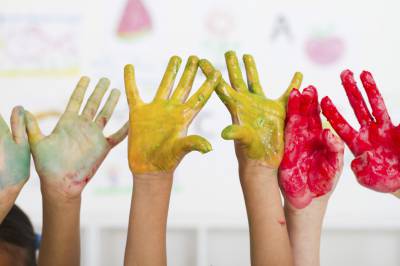
Your average three year old has at least 200-300 words. If you would like to boost your kiddo's vocabulary, there are many easy ways to work vocabulary-building strategies into your day.
1) Categorizing What group does it belong in? Have your child help you put things in their place. This game works well in the grocery store. Fruits, veggies, bread, meats, drinks--which things go together? PS: Your child does not need to know the names of each category, just which things go into each group. Your job is to be a helper and keep it fun.
2) Describing "I spy" is a good starter describing game. It helps kids pay attention to what makes the things around them "same" or "different". Size, shape, color and use (function) are good describers to start. Your job is to make it easy to guess, especially at first. Not being able to spy the item=not fun.
3) Phonemic Awareness Phonemes are the pieces of words that add or change meaning. The word bat, for example, has three phonemes b-a-t. If you change one phoneme, /b/ to /p/ the word becomes "pat". Use rhyming and singing to highlight the patterns in words. Tap or clap out sounds and syllables. Try thinking of all of the words that rhyme with your word. Once again, teamwork is fun. Testing is not. You and your child should explore this together.
I hope this gives you a few ideas that you can work into your day with your child.
What games do you play that help your child talk about the world around them? Visit Circle Speech Services at facebook.com/CircleSpeech to share.
Strong Words to Teach Kids
Names of their favorite things-spaghetti, Mutant Ninja Turtles, chalk, snow boots, trash trucks
Words to gain attention- look, uh oh, wow, stop
Words to gain personal space-go away, me, move
No!
Describing words-ow, dirty, wet, tired, done
Weak Words to Teach Kids
Manners words-please, thank you, excuse me
more
I want (before they have a strong single word vocabulary)
Kids with only a few words need those words to be meaningful and powerful. Teach the good stuff first.
Does your child know enough strong words? Even children who speak in sentences sometimes lack the words that matter. Contact Circle Speech Services for a free 15 minute phone conversation if you have concerns about your child's expressive vocabulary. We can help.

I attend IEP meetings on a regular basis, as both a parent and a professional. I have the utmost respect for the vast majority of the other professionals at the table. Teachers, therapists and administrators are working hard to balance the needs of the group with the needs of the individual. Sometimes, I feel heard and respected at the table. But, I sometimes notice a disconnect on the team. The family and the school personnel are adversaries rather than partners. Misunderstandings and defensive postures are common with rivals.
As someone who deals in language and semantics every day, I think we can go a long way toward understanding by choosing our words carefully in conversation. I have cringed to hear quite a few words in IEP meetings--docile, unimaginative, waste. By far the most common cringe-worthy word, however, is compliance. When I sit at a meeting representing a child, particularly a child with behavior issues, the words "compliant" or "non compliant" are often used to describe the child.
"He is compliant in therapy." "She is non compliant with using her iPad use." "She is so compliant in gym class."
I do understand this is academic jargon. But, think for a minute about the parents sitting on the other side of the table.
Is your dearest wish, as a parent, for your child to grow up to be "compliant"? When you imagine your young child's future, do you smile to think of them mindlessly completing tasks assigned by others? Or do you wish other things: independence, curiosity, passion, friendship, accountability, creativity, options?
Please consider that the family of the special needs child in front of you may hold those same dreams for their child. Your choice of words can close minds or open dialogue.
What words have made you cringe in IEP meetings? What words would you like to hear instead? Share your thoughts at Facebook.com/CircleSpeech

Stick out your tongue. Move it from side-to-side. Can you touch your nose with your tongue? Congratulations!
Mouth aerobics as part of a speech therapy plan was very popular for a very long time. I sometimes still meet children who were given mouth exercises to do as part of a therapy treatment plan. It seems like a good idea on the face of it. However, research shows that oral motor exercises do not translate to improved speech clarity.
Why not?
The muscles of the mouth and face are small and many are intrinsic to, or inside of, the surface of the mouth, cheeks and tongue. The precise, quick and sequenced movements of your muscles when you speak are not at all similar to muscle movement employed for "mouth aerobics".
The best practice for speaking is speaking. The best support for speaking muscles is specific, individualized touch and visual cues for specific speech sound errors. Find someone who can teach you, and your child, what you need to know.
Visit Circle Speech Services to find out more about PROMPT therapy. It's one option for improved speech clarity.

Music is communication
Music and communication are a natural combination. Songs and music create meaning for people and become part of memories and tradition.
The properties of music also help children with communication challenges to be successful speakers. I use music and instrument play with children because it helps pave the way for speech.
1) Music is largely "right-brain". The areas of the brain that control and interpret rhythm, melody and pacing are activated when we hear music. language is usually a "left-brain" activity. The areas of the brain that store, retrieve and hear words are on the left side in most people. When a person combines that right and left brain together, like in a song, the two halves can "help" each other. Children who find speaking difficult often find that singing can be a helpful tool.
2)Musical mechanics can help make speech sounds more clear. Singing, by it's nature, allows a person to exaggerate mouth movements, stretch out vowel sounds and highlight sounds, syllables and sentences. Precise mouth movement, slowed rate, pacing and drawing out syllables are all strategies for improved speech clarity.
3)Music is repetitive. Not only do songs repeat the same chorus throughout, the song does not change from day-to-day like conversation can. You can create routines or traditions with songs. You can sing a bedtime song or a bath time song. Songs are used to celebrate special occasions or holidays. Once your child knows a song, she will be more likely to join in and sing, too. When she is comfortable, you can "back out" of the song and let her finish.
4)Music is Social. In school, play or family activities, music can be a great way for a new communicator or a shy child to join in the fun. If everyone is singing, your child might feel less pressure to get all of the sounds and words correct. He will have a model in the other singers. If your child learns songs in school, he can come home and teach you. It builds confidence to be the "expert".
This is a piggy-back post to my recent blog about understanding sensory processing differences in kids. With the holidays approaching, families are asking what toys will best promote play and language skills.
First, let me say that less is more when it comes to toys. Too many brightly-colored toys packed into a space can be overwhelming and cause children to become over-stimulated.
Also, toys with bright lights and sounds can be distracting and passive. You don't want to spend your time and money on a toy that only requires that your child watch and push the button. You want interactive toys that require your child to engage with a toy.
Look for toys that are open-ended. The market is flooded with toys that tell your child how to play or that only offer one way to play. Open-ended toys engage a child's imagination. They can be anything and their function can change from day to day. (Think cardboard box).
"Top 10 Open-Ended, Interactive and Worth the Money SensoryToys"
1) large wooden beads
2) wooden blocks (of various shapes and sizes)
3) sturdy play kitchen supplies
4)Bilibo (www.bilibo.com) The ultimate open-ended toy
5) dough (homemade or of the play variety)
6) paint, brushes, sponges and plain paper
7)kinetic sand (www.wabafun.com)
8)Magna-Tiles (www.magnatiles.com)
9) Tinker Toys (Caveat: Many of the recently made "tinker toy" brands are not well made and, in my experience, break and crack easily) Try the "Makit" brand.
10)Squigz (www.fatbraintoys.com)
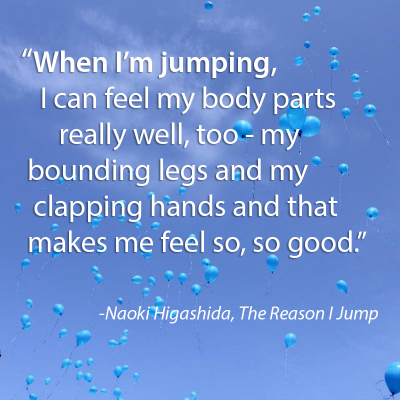
The moving is necessary. The flapping and the spinning helps shake free new thoughts and calm emotions. Or so I'm told, by young adults who are my clients. And by older adults, who were once children told to stop spinning, flapping and pacing.
What we call sensory processing differences are felt by many children and adults as a numb sensation (under sensitivity) or a pain sensation (over sensitivity). Many have a mixture of the two sensations-sounds are too loud but feet need to stomp to be felt.
Can you imagine conducting your life with that set of rules?
When we jump or spin or hang upside down, our body sends messages to our brain about where we exist in that moment. Where our body "is" right then. My friends and clients with sensory processing differences might seek out movement to help them feel comfortable in their own skin. Or, they might sit on the bed in the dark because the full-pace world is too much to process.
So many of the children I know can only look, play, learn and laugh when they are not too "over" or not too "under" alert. Right in the middle is best. I don't think our goal should be to stop these movement "behaviors" when helping children with processing differences, but to understand their purpose. Helping children reach and stay in the middle.
When your kids come in from school, I know you want to know what they did ALL day. It can be very hard to get them to spill. They are tired and hungry and the events of their day already seem so looong ago.
Here are 5 tricks to totally get them talking:
1) Ply them with snacks. Yes, butter them up with a yummy snack. They will be more agreeable to rehashing their day on a full stomach.
2) Give them a break. Don't ask for the rundown the minute their feet step off the bus. A lot has happened since they got on that bus in the morning and they will appreciate a little break in the action.
3) Use your psychic powers. If you notice evidence of arts and crafts or a spelling quiz peeking from the backpack, make a general comment about it. "I like your painting" or "It looks like you brought home extra papers today." Comments will get you more information than the third degree.
4) Mention your day. Offer an exciting, silly or even exasperating event from your own day. Talk about how you handled it and who shared your day. Your kids missed you, too. They feel good that you want to share your experiences with them.
5) Be a good listener. You have heard the saying "Listen to understand, not to respond". One day can be a mixture of missed homework, playground spats and long math tests, good friends, new learning and fun assemblies. When your child shares with you, really listen. Work for understanding and try not to react to every event.
If your child feels your empathy, she is more likely to share her day with you again tomorrow.
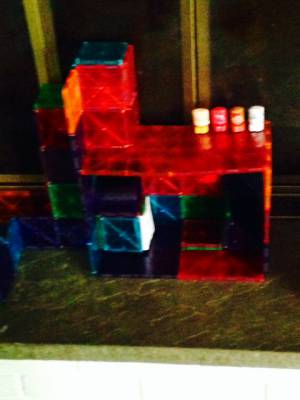
Building blocks are as basic as toys get. So basic, that sometimes their value in play can be overlooked. Blocks and the large variety of building toys should be on your radar because they are great learning tools.
Building helps children with fine motor skills. Coordination, sequenced movement and strength are important for dressing, buttoning, tying shoes, opening lunch containers and writing. Choosing and manipulating blocks helps build these fine motor skills.
Cognitive skills such as spatial awareness, attention, planning and mental flexibility are necessary to walk, talk, learn to draw, practice math, make friends have fun and basically get through the day in one piece. Building toys are an engaging way to practice all of these thinking skills.
Play skills as children are the dress rehearsal for social skills as adults. A big building site can offer a microcosm of a family, a relationship or a workplace. It sounds dramatic, but negotiation, leadership, cooperation and empathy can be test-driven during a big play project like building. All these skills you do need in a grown-up life.
Building toys offer children the opportunity to communicate in a variety of ways. Children working together to create something new need to listen and remember. They must ask for what they need and sometimes, ask for help. Symbolic, or pretend, play helps children learn that one thing can stand for another. That the creative process is important. What they build can be more than a wooden box with four sides. It can represent a street, a town, the moon--or a whole imaginary world. Symbolic play helps develop creative thinkers and learners.
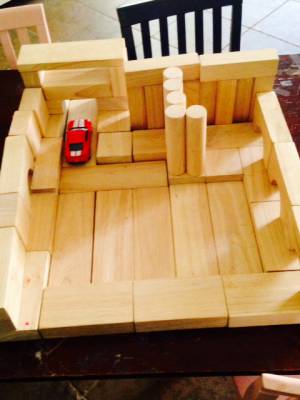
Block play can help focus children and engage their senses. Sensory-based play is, at times, most important for children with learning differences. Exploring different weights, shapes and textures can help keep children involved with their peers in play. Building materials with weight (large wooden blocks) or blocks with magnets (like Magna Tiles) help the brain-body connection in children. The more comfortable a child feels in his body, the longer that child will focus and learn.
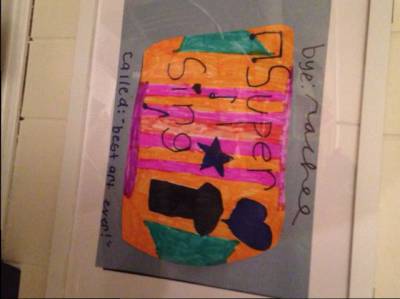
Door hinge frame for children's art work
Preschool is prime arts and crafts territory. If your child is bringing home enough construction paper to wallpaper your house, try some of these fun ideas to keep a record of these so-cute years, but not get lost under a heap of paper.
1) A high wire: Stretch a clothes line or length of colorful ribbon across your play room high enough so that you can walk under. Use clothes pins to clip art work to the ribbon. It brightens up the room and the work is easy to rotate.
2) Digital Frames: Take photos of your child holding her art work. Load the shots into a digital photo frame for all to see. Save a few special masterpieces to hang up, but record the rest digitally and trash the evidence.
3) Door Hinge Frames: Buy a few frames that open in front. They come in all different sizes and colors now. You can easily open the frame and change the picture whenever you like. A display of 2-3 "door-hinge" frames can be a nice permanent addition to your decor.
Whatever you do, don't just start filling up giant under the bed boxes. They just multiply under there like rabbits. By the time your child is in third grade, the art work will be out of control. Not that I did that.

Preschool is a first school experience for many children. The excitement children and parents feel is mixed with some nervous thoughts and hopes that all goes well. After the initial few weeks of adjustment, most kids are off and running .... and painting, building, coloring and even writing.
There are unique and wonderful differences in the way children learn, however. As the preschool year progresses, some children will feel more confident with a little extra support. Always schedule time to speak with the teacher, of course. There are many other little things you can do, as a parent, that add up to a whole lot of help for your child.
Three Steps To Take If Your Pre-School Child Needs a Language and Learning Boost:
Make Connections: Connect with other families in the class. Plan a short activity outside of school time. Play time around an activity like the park or an art class works well because you can set a definite beginning and ending time. Too long=too much time for melt-downs!
- Talk about transitions: A big part of school adjustment is learning to operate on someone else's time schedule. At home, you can reinforce the concept of a schedule by talking about the day, using a calendar or daily schedule board. If your child finds switching from one thing to the next very challenging, you might find a picture schedule helpful. It can be short--a board with pictures that shows what is "happening now" and what is "next".
- Pump Up the Play: In preschool, symbolic or "pretend" play takes a major leap. Children are combining toys together to make elaborate play themes that build language, social and cognitive skills. Children who need support in language and learning often struggle to join the fun. Help your child by playing with him. Stretch his imagination. Model new words and new ideas about play.
Circle Speech Services is offering Preschool EXTRA-a creative learning class for preschool age children staring in September, 2014 at The Learning Experience in Doylestown PA. This ten-week language and social enrichment class is ideal for children who need a little support to thrive in their current preschool. Registration starts May 1st! Click here for more details. Contact me at susan@circlespeechservices.com or call 215-622-5004 for more information!
If you would like to explore more about language and learning in the preschool years, visit Circle Speech Services at www.circlespeechservices.com or LIKE us on Facebook at facebook.com/CircleSpeech
The ads feel like a little pat on the back (as a Mom). I didn't produce any Olympians, but we muddle through. Those ads have a bigger impact on me, though, because I can see the parents of the special needs kids in my practice in those Proctor and Gamble moms. Just like those Moms weren't expecting to raise Olympic athletes, most parents are not expecting their beloved child to also have special needs.
Parents of children with communication and learning challenges sacrifice time, money and sleep every day to support their child. They are educator, advocate, friend, role models, chef, doctor and, yes, cheerleader for that child. Often the correct decisions are unclear and there are road blocks at every turn. Supporting a child with special needs is expensive and exhausting. Parents of children with special needs are juggling time with the rest of the family, time at work and giving up on sleep to get it all done.
The "Thanks, Mom" ad campaign reminds me why I do what I do in my career and my life. I offer my help to children with special needs, and their families, to celebrate what they accomplish each day. No one is making a commercial from their daily routine, but it definitely takes the stamina of a dedicated athlete to do what these parents do. I notice. And I hope to lend a hand.
If you need help working through a communication challenge with your child, I'd like to help you. www.circlespeechservices.com
It's no different for children and learning. Whether they are learning to talk, walk or drive, your children want to know "What's in it for me?" Watch what your kids do and say. What holds their attention, makes them laugh. What do they do without being told?
Then, find a way to tie that thing to the skill you are teaching. If your child likes movement play, don't try to teach her about animals by doing a puzzle. Go outside and chase sown some squirrels. If your child collects rocks, teach addition by counting his rock collection.
Some kids with special needs don't let you know right away what motivates them. Some might have a small number of activities they enjoy. But, I have never met a child who wasn't motivated by something. Whatever that is, it is essential that you find it, if you want to help your child learn something new.
What motivates your children to learn something new?
Here are my Top 5, in no particular order:
1) pom pom craft balls: count, pour throw, catch, glue them. One big plus is they do not fit up a child-sized nose.
2) wrapping paper tubes: use as microphone, instruments, racetrack, marble run. Wrapping paper rolls don't always come with the cardboard tube anymore. If you get one, hoard it!
3)coffee cans: use as a bank, cash register, magnet board, drum, container to fill and dump the pom pom balls you just bought.
4) balloons: are the best toy ever made. Catch, throw, hit blowup, pop, draw on, stick to the wall. So fun. And that is just scratching the surface.
5)water: in sinks or small tubs (or bath tubs). All supervised, of course. SPLASH! Water on/off, fill pour, empty, scoop, squeeze sponges, SPLASH!, color the water, make bubbles, SPLASH!
Use the letters and numbers as a "hook". Start playing with the alphabet letters or magnetic numbers. Let them lead your child into more interactive play. You can hold a coffee can and let her stick the letters to the outside to "build a house". Use your imagination. The goal is to broaden play beyond naming letters and numbers.
Expand on pictures in letter and number books. If your child is distracted by the letters or page numbers in books, help him find fun by looking at the pictures. Describe what's happening, use action and describing words. "Tell the story" using only the pictures. If you are looking at counting books, name the items rather than counting them.
Play with the sounds of those letters. Letter sounds can be more important than letter names in early language and pre-reading skills. Try associating the sounds the letter "say" rather than the name. (The A says /ah/). Challenge your child to find 5 things in her playroom that start with that sound.
These are just three ways you can use a love of letters and numbers to unlock a world of language-rich play for your child. What games do you play with your children around the ABC's and 123's?
Singing uses areas of your brain that talking typically doesn't use. When you use rhythm and melody along with words, more of your brain works together to make smooth and clear speech easier. Songs allow you to slow down your words, stretch out the sounds and speak louder. Using both sides of your brain together is helpful when learning new words, too.
When you sing the same song each day during the same routine, your child can predict when you will sing and come to expect it. You can then encourage him to join in the song by moving to the music. Pause at the end of each line to allow him to "fill in the blank" with the correct word. Try bath time, bed time or riding in the car. Gradually, your child will start to sing more of the words until he is singing, too.
Singing and talking are both motor skills that occur when your mouth and brain are working together. If your child is working to smoothly form words or struggling to put words into sentences, singing is a helpful tool. To make words fit into music, you slow down and let the rhythm carry the words. In longer words and sentences, you let the words sit on the sentence. Both rely on rhythm and timing.
I hope you will start to add some songs to your day with you family. I'd love to hear what songs you and your children choose!
Less is More. The ideal amount of toys for a preschool child is what can fit in a large shoebox. Pare down the amount of blocks, doll accessories and play dough so the whole set fits in one container with a lid. More than that is overwhelming and distracts a child from play, rather than encouraging play. You may have larger bins for older children, but the concept still applies. If your child is easily distracted or needs to develop play skills, limiting the amount of pieces is important.
Pack away the baby toys. Put aside or donate toys that are too young for your child. Even if your child still occasionally plays with a toy, age-inappropriate toys will not encourage play skills. Bring her skills to the next level by introducing a slightly higher level activity and then playing with her. Introduce new toys into a familiar game. Put people in the cars. build houses on the train table.
Rotate what you have. Ideally, a play area should have open space to sit and play, read or problem-solve. You don't need to make every toy you own available to your child all of the time. Put out a few toys in bins or baskets. Leave an open play area. Rotate toys every 1-2 weeks. Think about variety. Do you have items for pretend play, manipulative play (building materials), creative or messy play? If space permits, a little movement play area is nice, too.
If you can use a snow day to pare down, pack away and rotate your child's play things, your cabin fever won't feel so bad!






